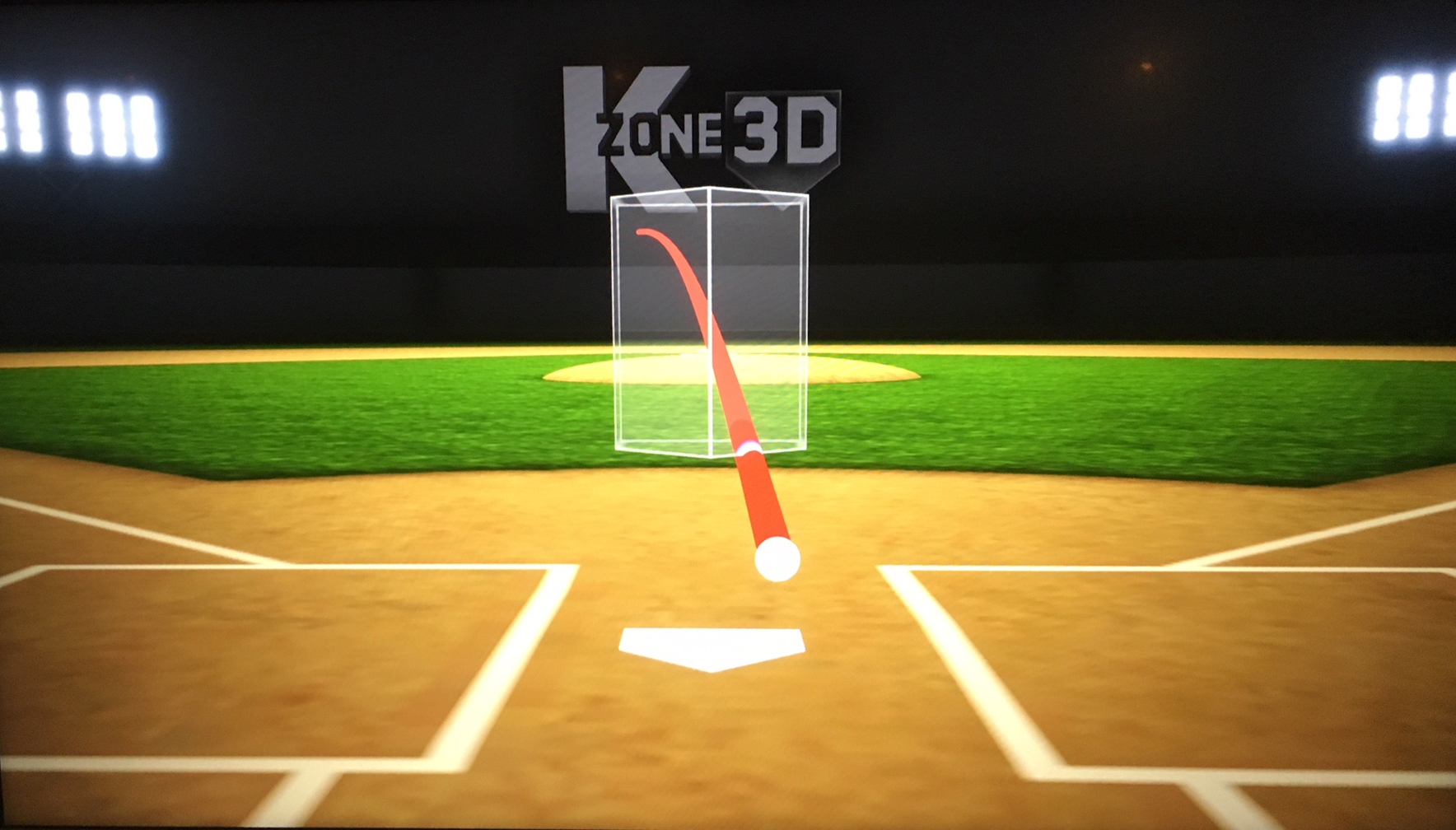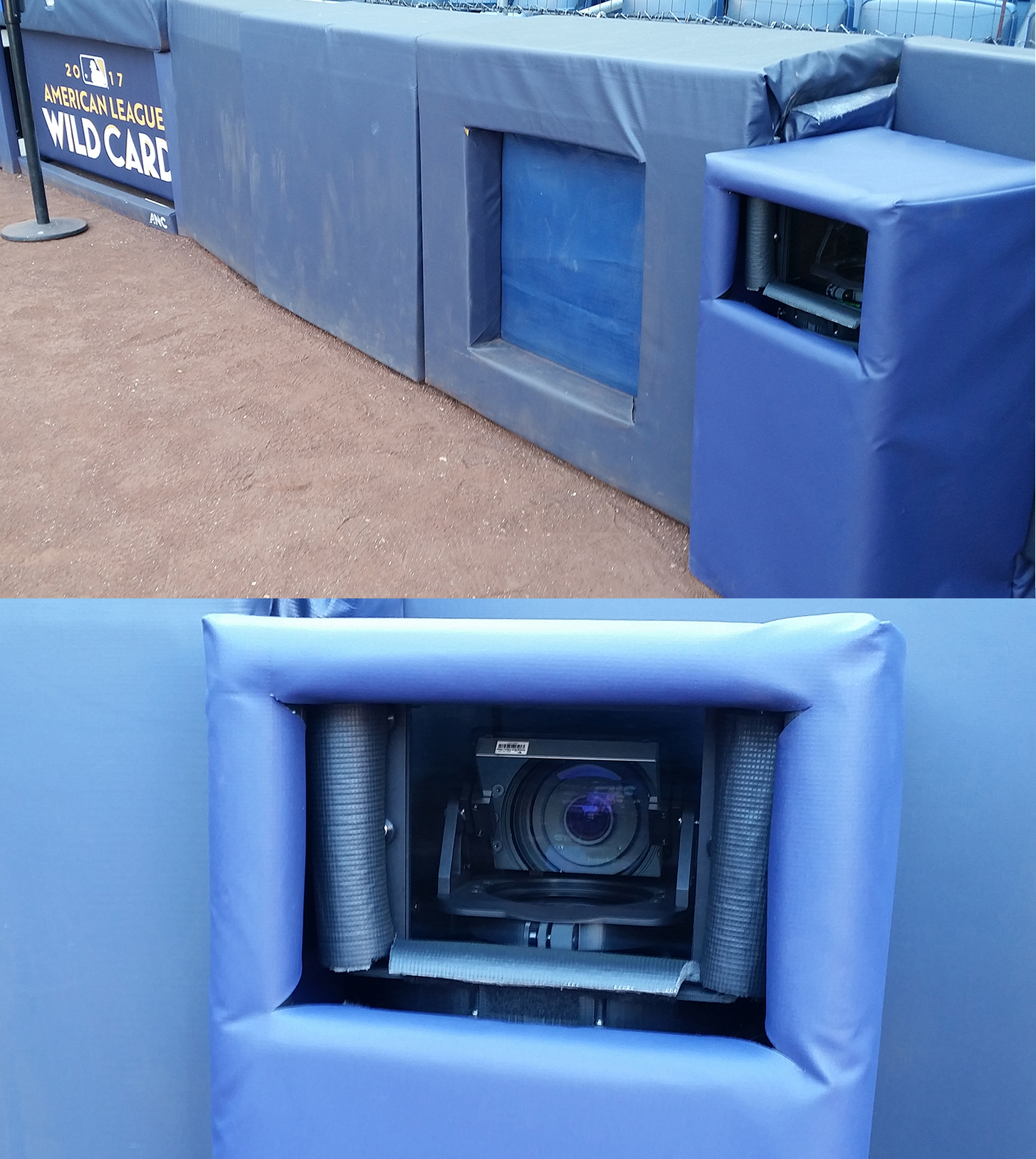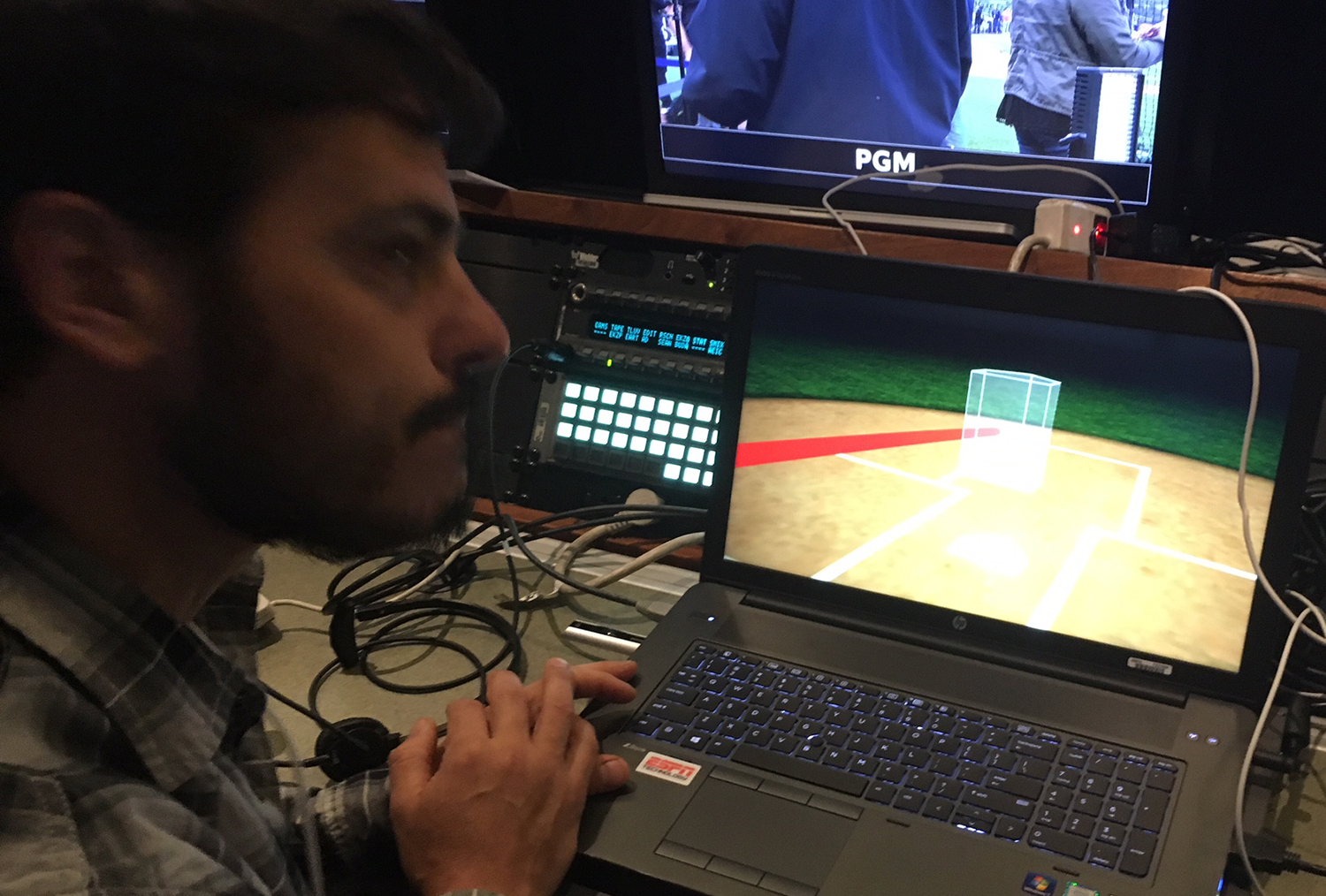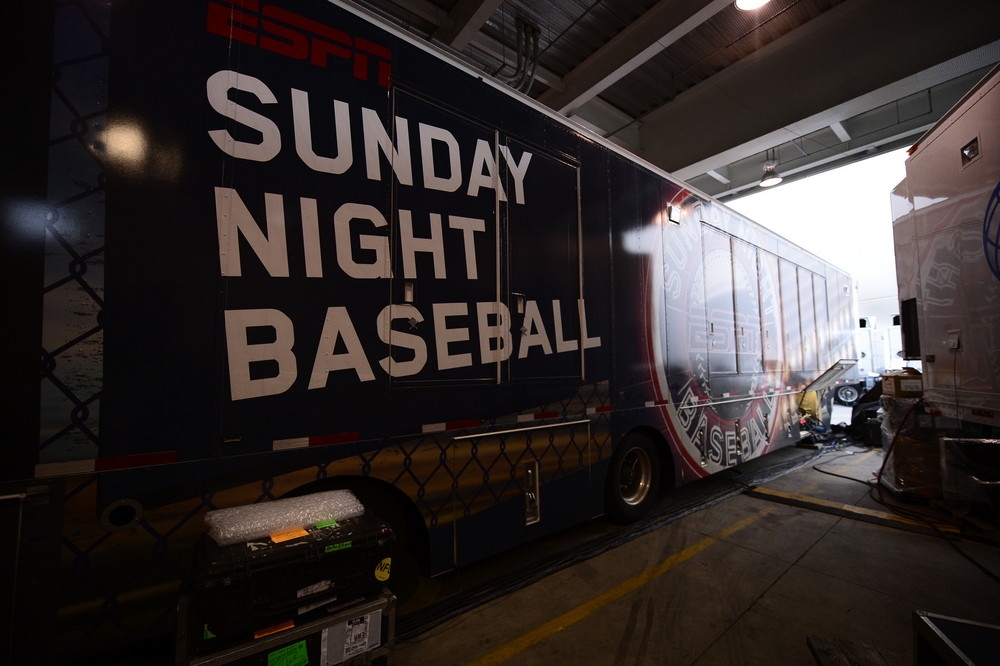MLB Postseason Preview: ESPN To Deploy Front Row Cam, Mound Mics, K-Zone 3D at AL Wild Card Game
Plenty of high-tech tools will be on hand at Yankee Stadium
Story Highlights
ESPN’s MLB season comes to an end this evening with its coverage of the winner-take-all AL Wild Card Game at Yankee Stadium, and, once again, the network plans a grand production crescendo. Among the highlights of ESPN’s Yankees-Twins production will be the return of the periscope-style Front Row Cam, the debut of a pair of microphones at the front and the back of the pitcher’s mound, and the introduction of an immersive K-Zone 3D tool (inside a virtualized ballpark) created by ESPN’s Advanced Technology Group.
“We’re always excited for the Wild Card Game because it gives us a chance to highlight a lot of the things we [introduced] during the season and try a few new things as well,” says Phil Orlins, senior coordinating producer for MLB, ESPN. “On the production side, we always try to stay aggressive, and I think you’ll see that.
Front Row Cam Is Front and Center at Yankee Stadium
After debuting in early July, the Front Row Cam has made roughly half a dozen appearances on Sunday Night Baseball and also played a key role at ESPN’s US Open tennis production.
“We will have Front Row Cam,” he continues. “This is exactly the type of game we built it for, honestly: the two best pitchers for both teams, tight shots of faces, ultra-slo-mo of pitch replays. This gets us a whole lot tighter on a pitcher’s face in a dramatic situation than we would have otherwise. And it gives us great looks at the pitches and the ball movement and also some really cool low, wide shots. The bigger the game, the better the pitcher, the more pressure, the more useful it is. This is definitely a good one to have it for.”
Developed in conjunction with VER, the Front Row Cam system features a Sony HDC-P43 (outfitted with a Fujinon lens) inside a small cylinder aimed skyward and shooting off a mirror. The camera chain comprises a Sony BPU-4000 baseband processor unit (with high-frame-rate license), HDCU-2500 CCU, and, inside the truck, RCP1500 remote-control panel. The 6X slo-mo replays are handled by an EVS XT3 replay server. The entire system runs on two fibers into a Sony HKCU-SM100 CCU extension adaptor and also features a VER pan-and-tilt controller for the robo operator and a VER 3D-printed housing.
According to Remote Operations Manager Paul Horrell, the network will deploy 30 cameras to cover the game and the onsite pregame set for Baseball Tonight and SportsCenter: 16 Sony HDC-2500, four HDC-4300 6x slo-mos (one more than the SNB complement), a Phantom 4K ultra-slo-mo, four robos (including the Front Row Cam), three Marshall POVs, a roving RF handheld and RF MōVI rig, and a TVU bonded-cellular system for ENG.
Miking the Mound: ESPN Continues To Push the Audio Envelope
Baseball audio coverage continues to bring fans closer to the field, and ESPN is helping lead the charge with its first deployment of buried FX microphones around the pitcher’s mound. In addition, ESPN has four Quantum5X in-ground mics buried around home plate to capture on-field audio, a standard deployment for Sunday Night Baseball this season.
To avoid audio kills during the game, ESPN has begun producing two mixes: one with the on-field mics and one without. Rather than kill the audio entirely in the case of an on-field curse, for example, ESPN flips over to a full mix without the field microphones to create a seamless effect.
“Two microphones around the pitcher’s mound [bring] a little bit of a more intimate sound to the [telecast],” notes Orlins. “We put the [dual-audio mix] in play a few months ago, and, thanks to a lot of people in Bristol and [Audio Engineer] Dan Bernstein and others onsite, we were able to accomplish that pretty quickly, and it sounds great.”
Advanced Technology Group Takes K-Zone to the Next Level
The Wild Card Game is a forum for launching a K-Zone 3D element, developed by ESPN’s Advanced Technology Group, that uses a virtual-camera system and virtual strike zone to create an immersive K-Zone experience.
 Set inside a virtualized 3D stadium and using MLBAM Statcast data, the new K-Zone feature allows ESPN to spin the camera angle anywhere around home plate to offer greater transparency in pitch analysis.
Set inside a virtualized 3D stadium and using MLBAM Statcast data, the new K-Zone feature allows ESPN to spin the camera angle anywhere around home plate to offer greater transparency in pitch analysis.
“This is a supplement to the K-Zone, not a replacement,” Orlins explains. “Statcast data is represented so you see the exact movement and trails of the ball as it travels through the strike zone. Then we can spin the camera up over top to look at a close pitch on the inside corner or to the side to look at a pitch that’s high.
“It also gives us a chance,” he continues, “to show when ball misses the front plane of the strike zone but catches the side or the back for a strike. Those are really tricky things to depict from a two-dimensional centerfield angle. Being able to go into a virtual world and move around, you can really see the three dimensions of home plate. I think it very much authenticates the amount of detail that’s in this information and shows it visually in a strong way.”
EN2 Back in the Compound for Postseason
NEP’s EN2 mobile unit, home to SNB throughout the season, will be at Yankee Stadium. The ESPN Deportes switcher and production area inside EN2 will serve the pregame early Baseball Tonight and SportsCenter onsite studio coverage (at 5 and 6 p.m. ET, respectively) from the field desk and reporter positions, along with a separate audio flypack system from NEP, which will live in the Illumination Dynamics C unit. EN2’s primary control room will handle the 7 p.m. edition of Baseball Tonight.
“This gives us maximum flexibility in producing the early game-day studio coverage while minimizing the impact on the game-production preparations,” says Horrell. “We used the same setup earlier in the season, and it worked very well.”
A Look Back at 2017: The GREMI Model Has Arrived
With the Home Run Derby in Miami and inaugural MLB Little League Classic in Williamsport on top of the weekly slate of Sunday, Monday, and Wednesday games, it has been a very busy MLB season for ESPN. According to Orlins, two of the key focuses this season were keeping the pace of the telecast as fast as possible — including increased use of the two-box screen format for live studio cut-ins and look-ins at other games — and an emphasis on a more fun atmosphere inside the booth.
“One of our main goals is to keep the pace of the telecast at the fastest possible level, so we’ve been much more aggressive this year with using the two-box look for studio wraps and cut-ins, live look-ins,” he says. “I think the other thing we’ve taken a number of steps forward on is adding some humor and looseness to the broadcast, thanks to our talent, who have been really amazing this year.”
Chief among ESPN technical accomplishments this season was the full deployment of the GREMI (graphics–remote-integration) model on all Monday- and Wednesday-night games. The GREMI workflow allows all Vizrt graphics to be generated and integrated into the telecast at the broadcast center in Bristol, CT, reducing onsite crew and equipment.
“I would say without hesitation that this season has gone remarkably well,” says Horrell. “I think the biggest technical challenge for us this year was working through the new GREMI model and all it entails. While it does share some similarities with a traditional REMI model, it is a different workflow with some unique challenges.
“Right out of the gate from Opening Day games and throughout the season,” he continues, “virtually every department — from production to remote operations — had a key piece of the technical or logistics puzzle to work through, and the amount of expertise, coordination, and communication in developing and integrating that workflow was a tremendous shared accomplishment. Implementing that on a weekly basis was no small task, and I can’t say enough about my remote-operations teams and the engineering support we received in fine-tuning and making that happen.”



